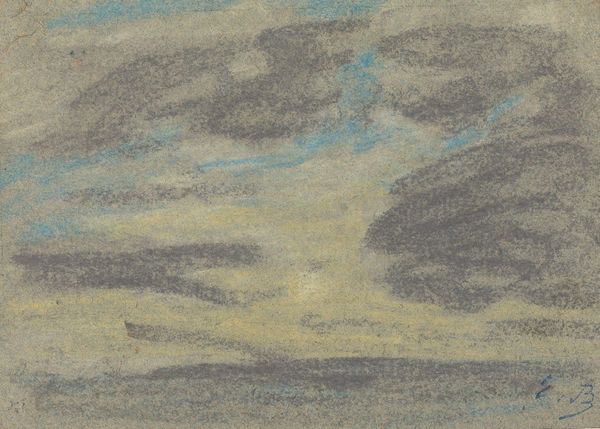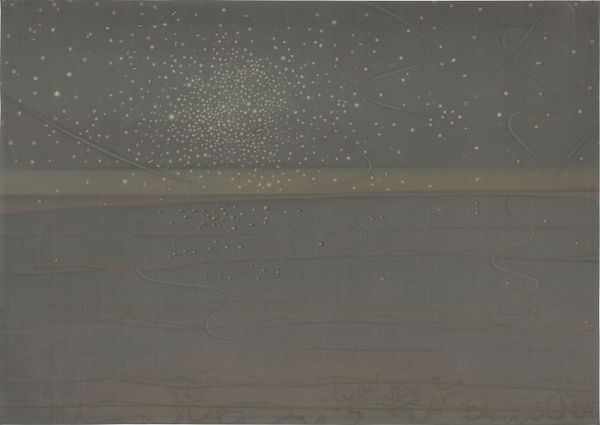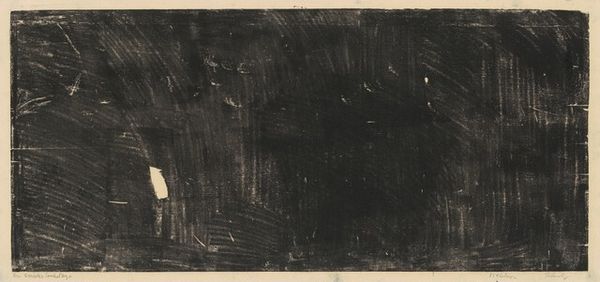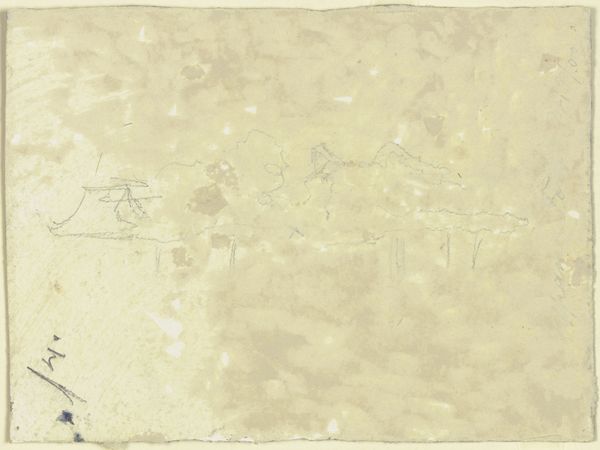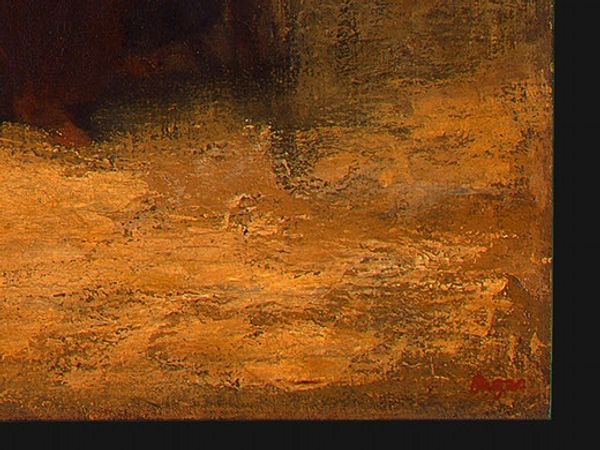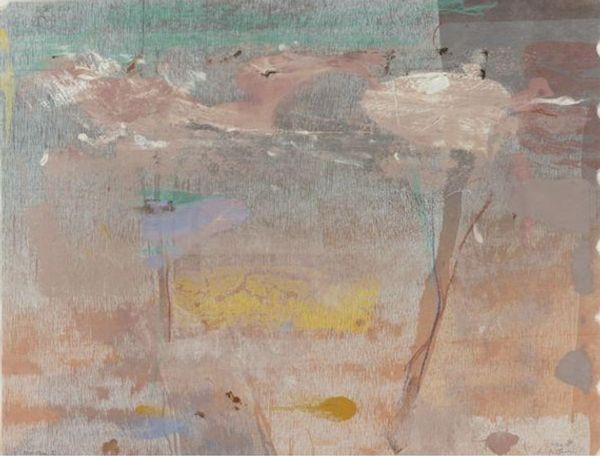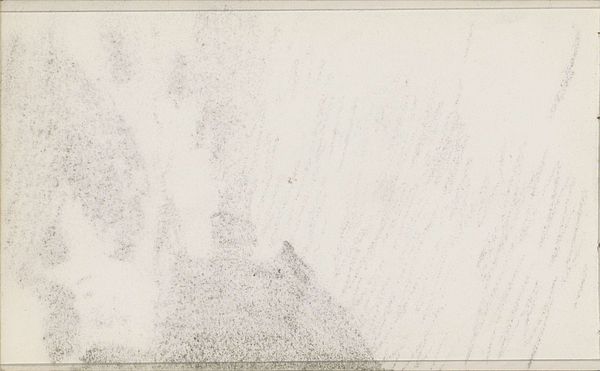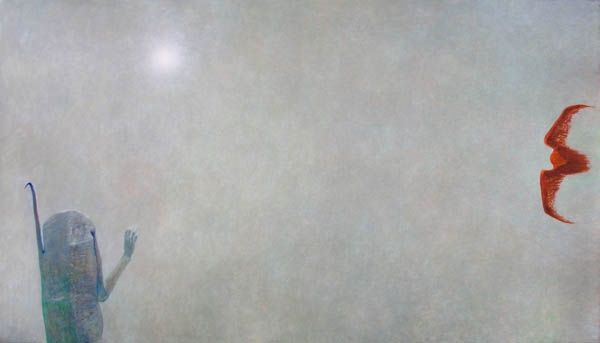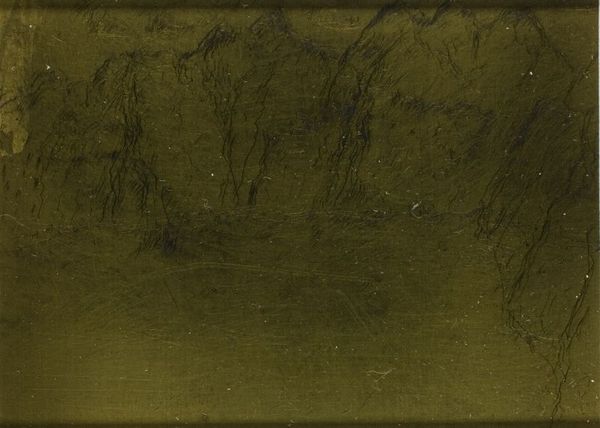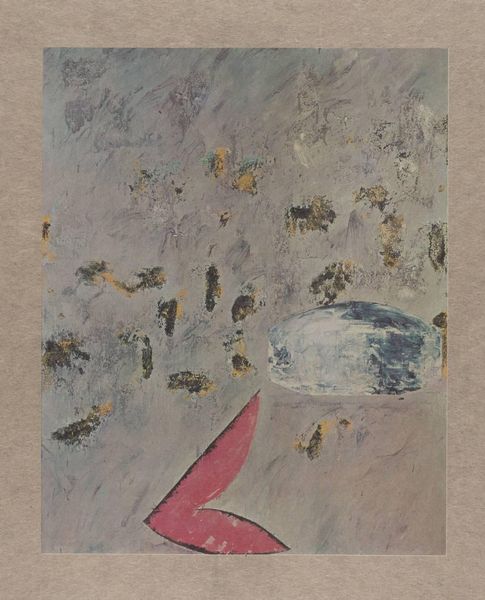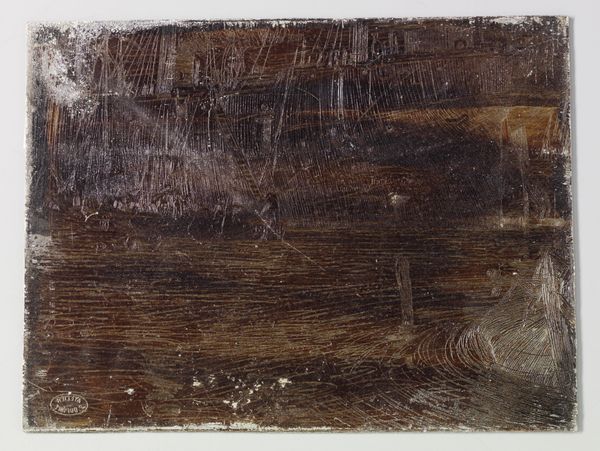
painting, acrylic-paint, impasto
#
painting
#
landscape
#
acrylic-paint
#
figuration
#
impasto
#
abstraction
Copyright: Public domain
Editor: So, we're looking at Grigoriy Goldstein's painting, "Mysticism," likely made with acrylic paint and impasto. There's an almost ghostly quality to the figures and the overall landscape feels… unresolved. What strikes you about the piece? Curator: I see a compelling interrogation of artistic labor itself. Goldstein’s choice of acrylic, a material democratized by mass production, resists the aura of preciousness traditionally associated with painting. The impasto technique, though seemingly expressive, becomes almost mechanical in its repetition. Where do these figures exist in relation to the means by which their images were created? Are they even figures at all or an accumulation of raw materials to evoke a symbolic understanding? Editor: I see what you mean. It’s not about representing figures but highlighting the material construction of an image. Is the title, "Mysticism," then perhaps ironic? Curator: Exactly! "Mysticism" could be seen as a sardonic comment on the commodification of spiritual experiences. Goldstein presents us with the remnants of artistic expression—acrylic and texture, traces of human activity, labor, all meticulously and repeatedly applied to an industrial canvas—raising the question, can such calculated material practices genuinely embody spiritual depth? And for whom? Editor: So, instead of the "divine inspiration" of the artist, we have an artist working, processing… even mass-producing the appearance of mysticism. Curator: Precisely! How is Goldstein engaging with notions of production by the implementation of repetitive strokes? What relationship do these images suggest between our hand and eye and their subject. Editor: This has made me reconsider my initial reaction entirely! Now I'm thinking more about the artist's process than the figures in the artwork. Curator: That’s the beauty of a materialist approach! It anchors us in the physical reality of art-making and urges us to consider its broader social and economic implications.
Comments
No comments
Be the first to comment and join the conversation on the ultimate creative platform.
